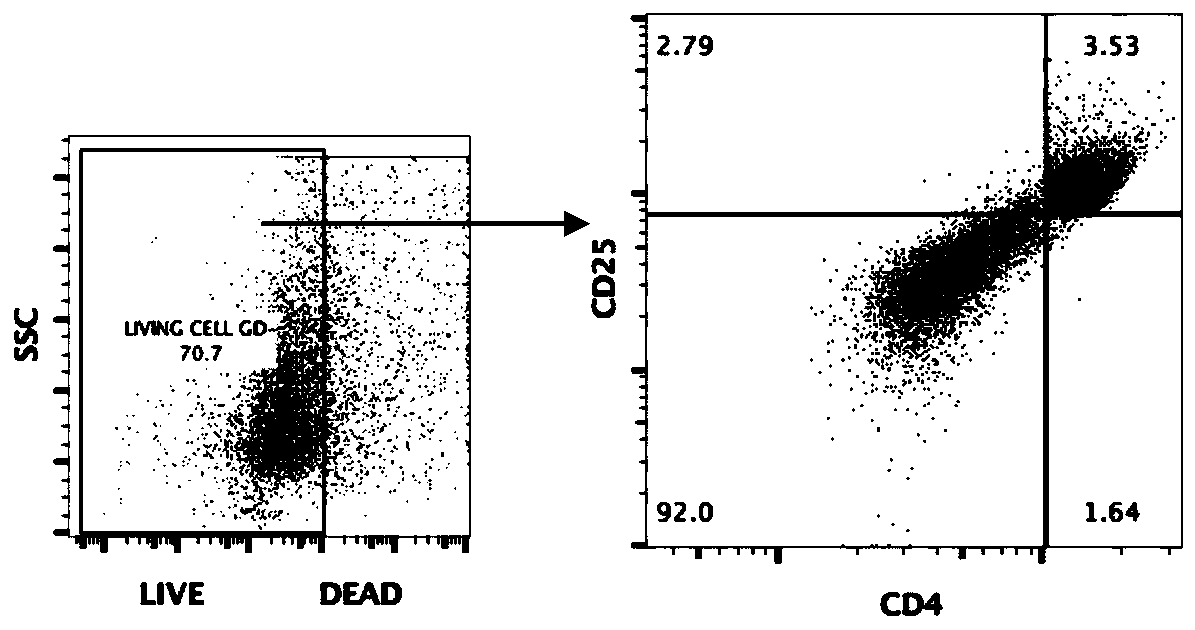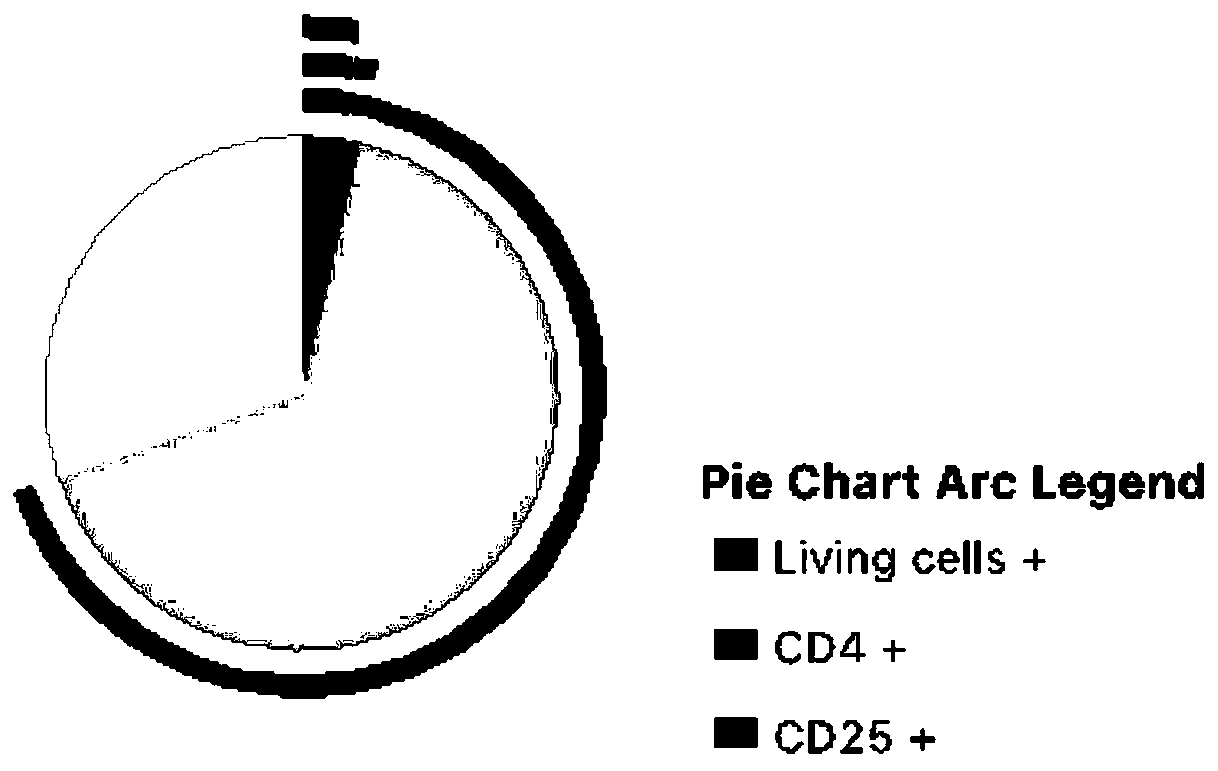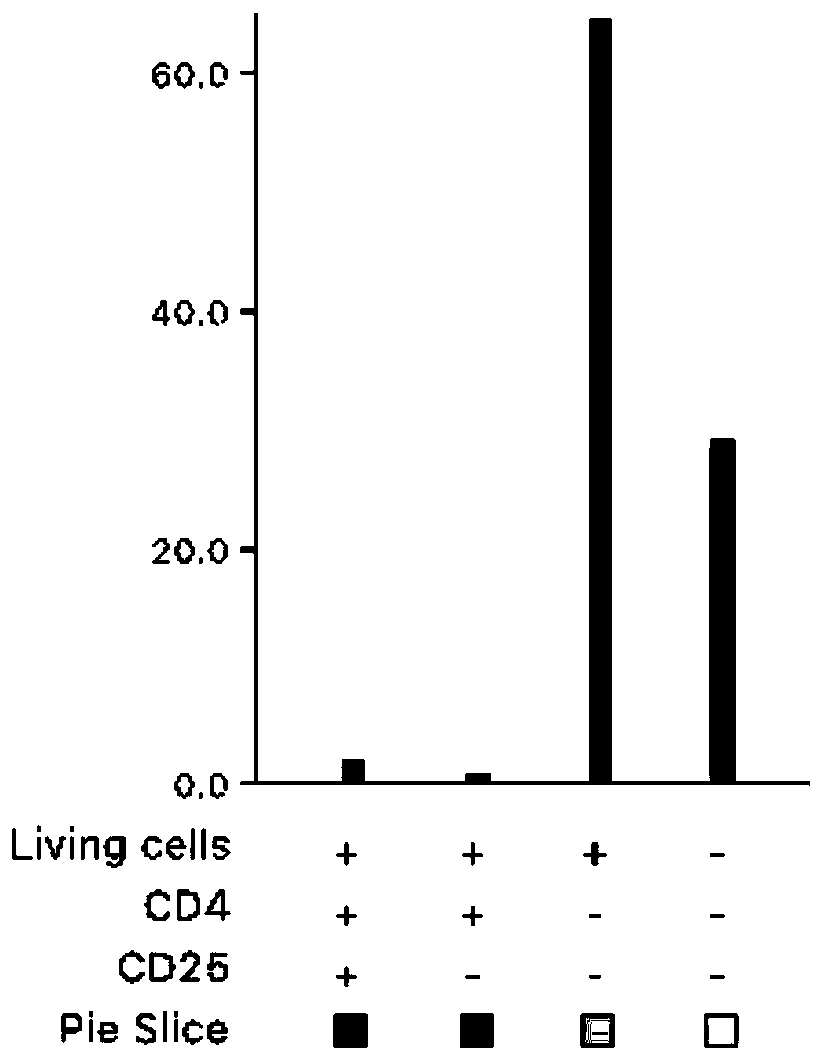Mouse skin digestion complex enzyme and method for isolating micro-immunity Treg cells from mouse skin
A technology of immune cells and compound enzymes, applied in the medical field, can solve the problems of immature technology, low efficiency, and small number of cells, and achieve good digestion effect, good digestion effect, and convenient cytology and molecular research.
- Summary
- Abstract
- Description
- Claims
- Application Information
AI Technical Summary
Problems solved by technology
Method used
Image
Examples
Embodiment Construction
[0027] The invention provides a mouse skin digestion complex enzyme and a method for isolating trace immune cells Treg cells from mouse skin, wherein: the mouse skin digestion complex enzyme is composed of RPMI (Roswell Park Memorial Institute) medium, 1% HEPES ( 4-(2-hydroxyethyl)-1-piperazineethanesulfonic acid) buffer, 10% fetal bovine serum, 1% penicillin / streptomycin double antibody solution, 2mg / ml type 11 collagenase (Collegenase11), 0.5mg / ml hyaluronic acid Enzyme (hyaluronidase, HAase) and 2mg / ml deoxyribonuclease (deoxyribonuclease, DNase) prepared. Collagenase is an enzyme extracted from bacteria. It has a strong digestive effect on collagen and is suitable for digesting fibrous tissue, epithelial tissue and cancer tissue. It has little effect, and can separate cells from collagen components without damage. The addition of other enzymes can get better digestion effect.
[0028] Based on the mouse skin digestion compound enzyme provided above, the present invention ...
PUM
 Login to View More
Login to View More Abstract
Description
Claims
Application Information
 Login to View More
Login to View More - R&D
- Intellectual Property
- Life Sciences
- Materials
- Tech Scout
- Unparalleled Data Quality
- Higher Quality Content
- 60% Fewer Hallucinations
Browse by: Latest US Patents, China's latest patents, Technical Efficacy Thesaurus, Application Domain, Technology Topic, Popular Technical Reports.
© 2025 PatSnap. All rights reserved.Legal|Privacy policy|Modern Slavery Act Transparency Statement|Sitemap|About US| Contact US: help@patsnap.com



